Variety of black aquarium fish
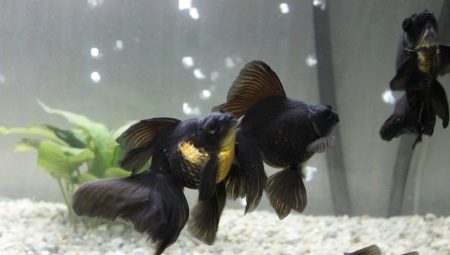
Black fish in the aquarium look noble and solid, despite their seemingly boring dark color. There are not so many varieties of pure black fish, individuals with spots of a different color are more common, or their scales have a shade of brown, green, etc. Let's get to know these fish better.
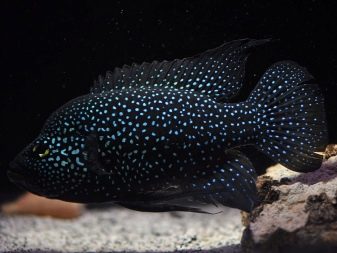
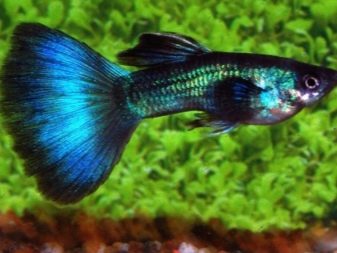
Overview of varieties of large sizes
Let's start, perhaps with large representatives of the raven-colored fish community.
- Ancistrus dark. Belongs to the family of chain mail catfish. It has a flattened body with a large head, tapering towards the tail. The eyes of ancistrus are large, convex, located on top, in color they almost do not differ from the main color of the catfish. The oral cavity is round, has the shape of a suction cup, and is equipped with corneous lamellar jaws that allow scraping food from hard surfaces.
The color of the ancistrus is brown-olive, the belly is lighter - greenish-gray or brown. The catfish is decorated with light spots. The fins are rather large, the dorsal is reminiscent of the sail of a yacht. The size of ancistrus in captivity is 14-16 cm.

- Black bagrus (mistus, upside-down killer whale, upside-down catfish). A rare guest in a home aquarium, but if you try, you can find this beautiful and unusual fish in a pet store. It has an elongated torpedo-like body of black color with small silvery blotches, a triangular dorsal fin resembling a shark, 4 pairs of long (almost half the length of the body) whiskers. In the wild (and it is found in Myanmar, in the Ayeyarwaddy River), its height reaches 30 cm, in aquarium conditions – no more than 20 cm.

A distinctive feature of the black bagrus is its love of swimming "upside down" - belly up.
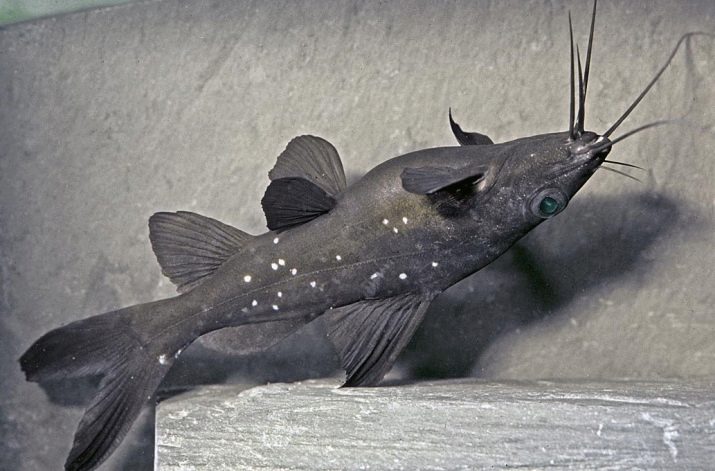
- Zebrasoma. A very unusual rare fish. It has a high, laterally flattened ellipsoid body. Large fins on the back and belly expand towards the tail, giving the zebrasome an almost triangular shape. The caudal fin is small, with an even cut, reminiscent of an isosceles triangle.
The muzzle of the fish is elongated, the eyes are large and expressive. The color is slate, there is a small white spot at the base of the tail.
In length, a zebrasoma can grow up to 20-21 cm. It does not breed in captivity.
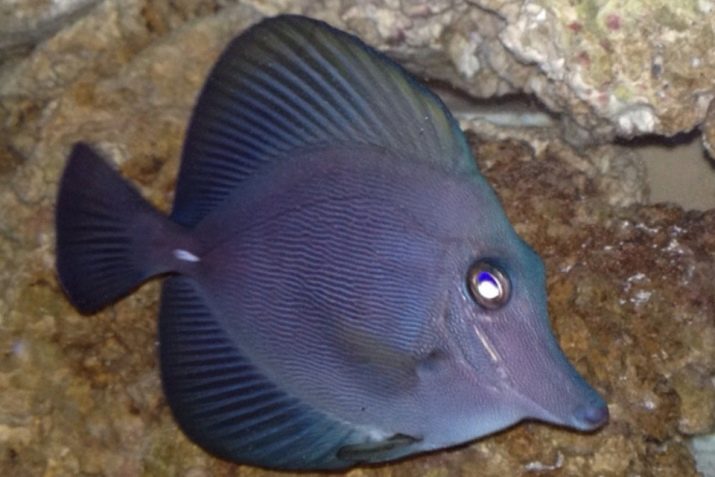
- Black-striped surgeon fish. It got its name from the presence of a sharp scalpel-like growth located in the tail area. When these fish are angry, they can use it, inflicting cuts and scrapes on each other (which, however, are rarely fatal). The body is in the form of an ellipse, flattened on the sides, high. The ventral and dorsal fins are rounded, following the shape of the body.
The tail fin resembles a crescent. The surgeon's color is almost charcoal, has an olive tint. A wide white stripe runs across the base of the tail. The size of this fish is 35-40 cm.
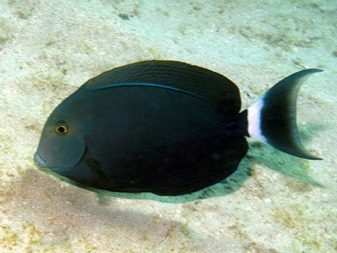
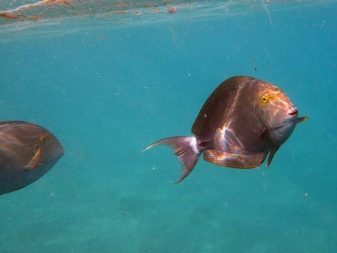
- Brocade pterygoplicht. Another catfish. Generally speaking, it can be classified as a black-colored fish rather conditionally, since there is a bright golden mesh pattern over the entire surface of its body and on its fins. The general background is dark brown.
Like most catfish, the body of the pterygoplicht is flattened from top to bottom, the fish has a wide head with high-set eyes, a sucker mouth. A distinctive feature is a high sail-shaped dorsal fin up to 15 cm long. The pterik itself in captivity can grow up to 30 cm (in natural conditions, it is twice as large).

Variety of small fish
Now you should get to know the smaller ones, however, no less interesting black fish.
- Black sword-bearer. An infrequent aquarium inhabitant. Strictly speaking, this species is a hybrid of a green swordsman and a black platy. It has a deep black color with a greenish or bluish tint.
The eyes are silvery, the pupil is dark, large. The size of the individual is 8-10 cm.
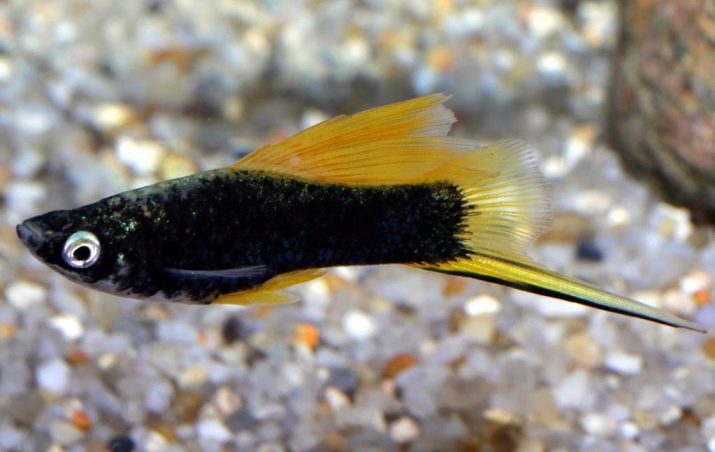
- Black molly (mollies). A favorite of many aquarists. It has a coal-black body color, a comb-like dorsal fin, the tail fin is similar to a lyre or a cut semicircle. The size of the black molly is a maximum of 10 cm, females are larger than males.
Mollies is a viviparous fish, which makes it the most interesting inhabitant of the aquarium.
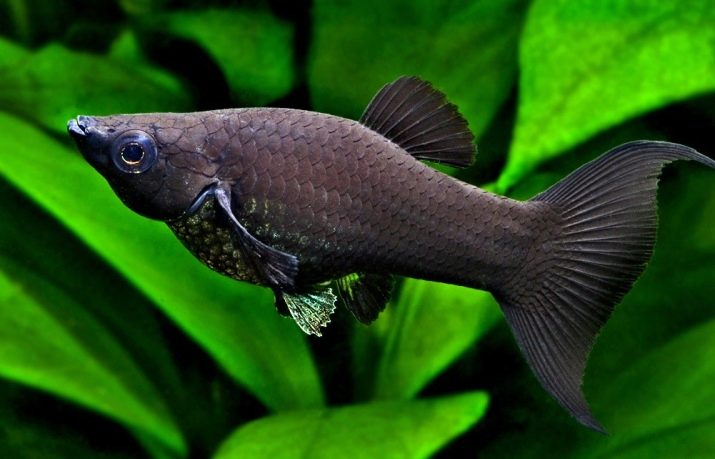
- Black pecilia. Quite a small fish, reaching a length of only 2.5-3.8 cm. Its coloring is not pure black: the muzzle, abdomen, dorsal and caudal fins are colored orange or silver. And on the very scales there is a greenish tint. Through selection and hybridization with swordsmen, new interesting representatives of the species appear, with a variety of shades.

- Black telescope (black moor, black prince). This fish is famous for its unusual appearance. It is a type of goldfish. It has a small but dense body, with a prominent round belly and a "hump" on the back. The fins are veiled, elongated.
A distinctive feature of the telescope is its huge bulging eyes, which, incidentally, are rather poor at seeing. The color of the Moor is velvety black, sometimes there are individuals with a greenish or purple tint. The size of the telescope is up to 10 cm in length.
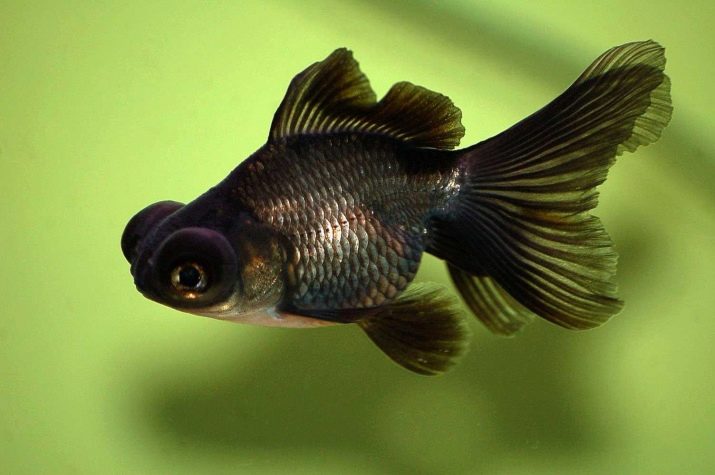
- Black guppies. They are representatives of viviparous fish. There are several varieties among black guppies. The black prince guppy is characterized by a coal-black body color, which smoothly turns into silver at the top of the head. By the way, this color is inherent only in males, the "ladies" are painted much more modestly, only their tail is black.
The black monk guppy has a charcoal body that shimmers with an electric blue color. The abdomen is light. The females have a black tail, the color is beige-silver.
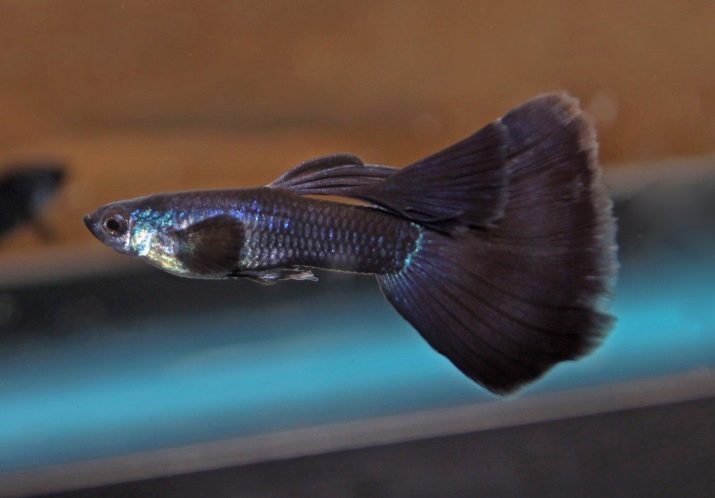
Moscow blue guppies are one of the most beautiful representatives of this species. Strictly speaking, they are not black, but simply very dark, with bright tints of blue, emerald, purple.
Guppy Tuxedo (Guppy Tuxedo) interesting in that they seem to be wearing a dark tuxedo, starting from the side fins. The head, gills, dorsum and abdomen up to the middle of the body are colored pearlescent silver.
Guppy panda. It belongs to the black varieties, although the main color is greenish gray or bluish ink. The back is darker than the front; the fins are also dark.

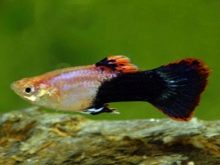
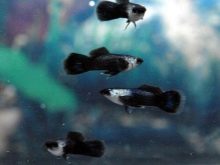
- Black scalar. There are 3 subspecies: black hybrid, double dark black and black lace. The black hybrid appeared as a result of crossing the golden and marble scalar. The most expensive individuals of the upper class have a deep black color, while the cheaper ones will have light stripes.
Double dark black is characterized by a charcoal color, the stripes can only be seen in bright light. The black lace scalar has stripes on its tail that give it its name. The overall shade is velvety black.
The appearance of the scalar: ellipsoid high body, flattened from the sides, very long fins, often veiled, pectoral fins are radial. The eyes are large, located on the sides of the head, the muzzle is triangular.
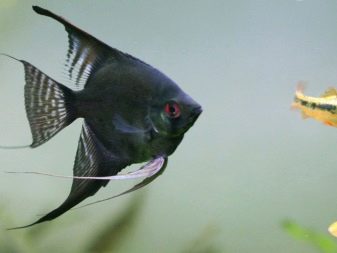
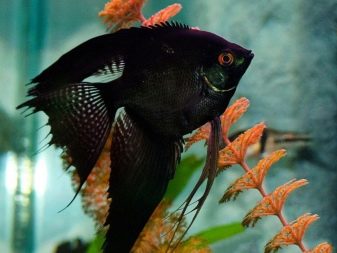
- Black Betta cockerel. In the wild, pure black individuals are rarely found, however, through selection, several "black" varieties have been obtained. Melano black characterized by a dense black color, sometimes with a tinge of blue. Black lace has a golden undertone, is quite rare. Black Orchid differs from others in the presence of radial outgrowths and blue-steel stripes on the fins, whose play is reminiscent of the wings of a butterfly.
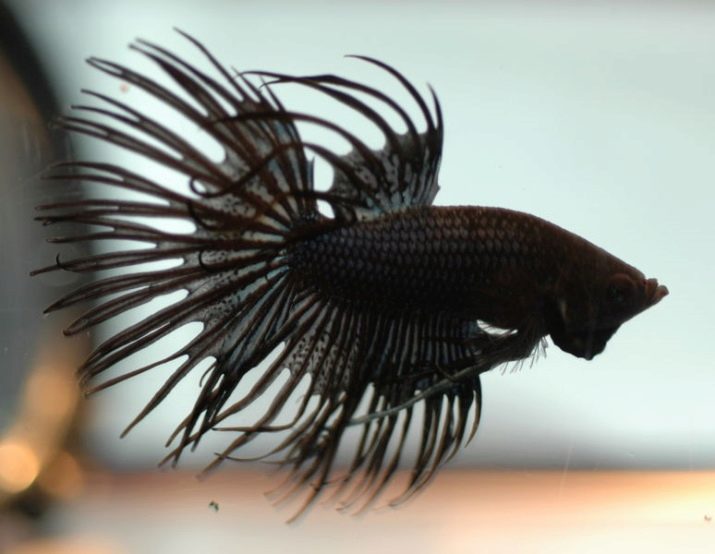
Have black devil the caudal fin has scarlet spots forming a fan-shaped pattern. Variety black ice has a greenish or silvery scale. In length, black cockerels reach a maximum of 5.5 cm.

- Macropod is black. Despite its name, strictly speaking, it is not. The main background of the carcass is brown-gray or chocolate. The scales have a pronounced dark border, which results in a mesh pattern. The eyes of the black macropod are red; red is also present on the ventral ray-shaped fins.
The tail is lyre-like, with elongated tips on the sides. It is called black because during the mating season, males acquire this very body color. The size of a fish in captivity is 8-12 cm.
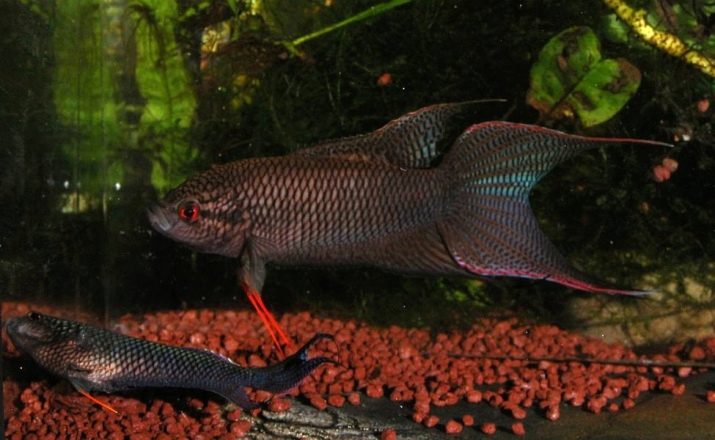
- Labeo bicolor. This aquarium inhabitant is interesting for its double coloration: a red tail stands out brightly in contrast to the coal-black body. The general appearance is as follows: the carcass is in the form of a cylinder, tapering towards the base, arched back, slightly flattened sides. The muzzle is triangular, the eyes are large, expressive; there are small antennae on the lips. The size of a labeo bicolor in captivity rarely exceeds 11-12 cm, while in natural conditions it can grow up to 25-30.
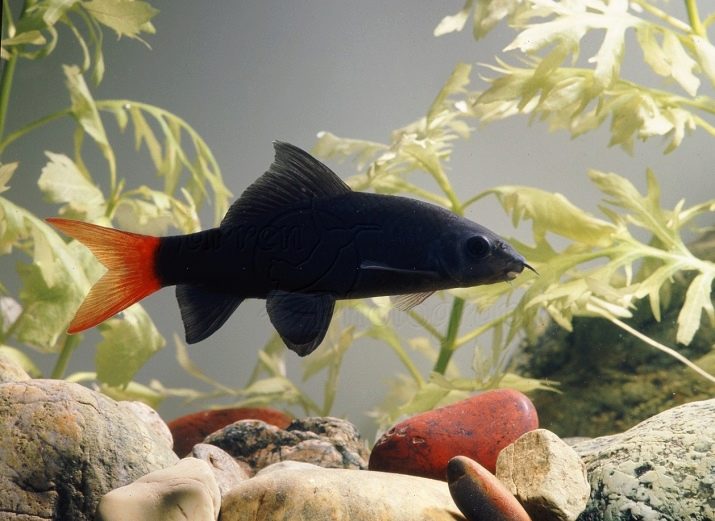
Features of choice
If you want different species of fish to live in your home underwater world, make sure that they are able to get along with each other, otherwise form a monospecific aquarium.
Next, decide on the size and number of pets: do you want to buy 2-3, but large, or 10-15, but small? Remember that you will not be able to choose both at once: "small fish" in 99% of cases becomes prey for larger fish.
Another caveat: purchase varieties that are similar in terms of habitat requirements. It is logical that sea and freshwater inhabitants cannot be lodged together, however, they must also love the same temperature and water hardness, food, the volume of the tank where you plan to run them should be enough for them.
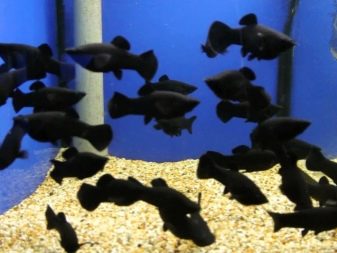
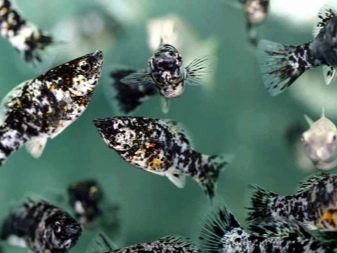
And finally, when choosing fish, remember that some of them tend to nibble or dig up aquarium plants: before buying, make sure they don’t do it (or do it as you wish, if suddenly you don’t want to be engaged in planting underwater flora).
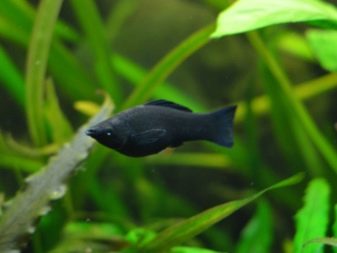
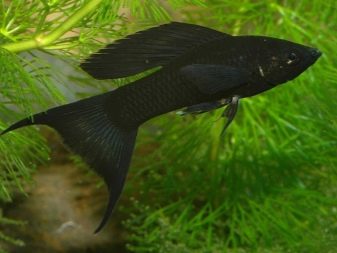
Care Tips
Daily care for aquarium fish include the following steps.
- Feeding. Most fish prefer to "eat" twice a day - in the morning and evening. Remember: everything that has not been eaten must be removed with a net. Otherwise, the water will become polluted and rot.
- Maintaining a constant optimal water temperature. Investigate your pet's preferences and install a heating system for your aquarium. A thermometer will tell you about temperature fluctuations.
- Don't forget to clean the tank and change the water (25-30% changes at a time). You can install a flow-through system if you are confident in the quality of your tap water. It is advisable to clean the walls of the container from plaque at least once a week.
- Compressor and filtration system installation - compulsory equipment for a home aquarium.
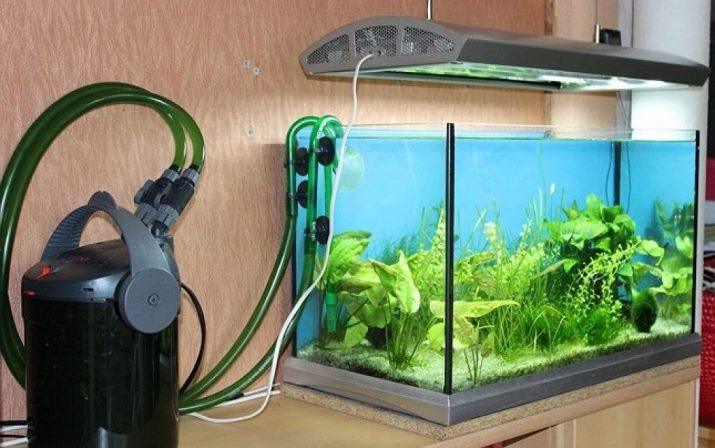
The following video will tell you about the intricacies of keeping and caring for mollies.








